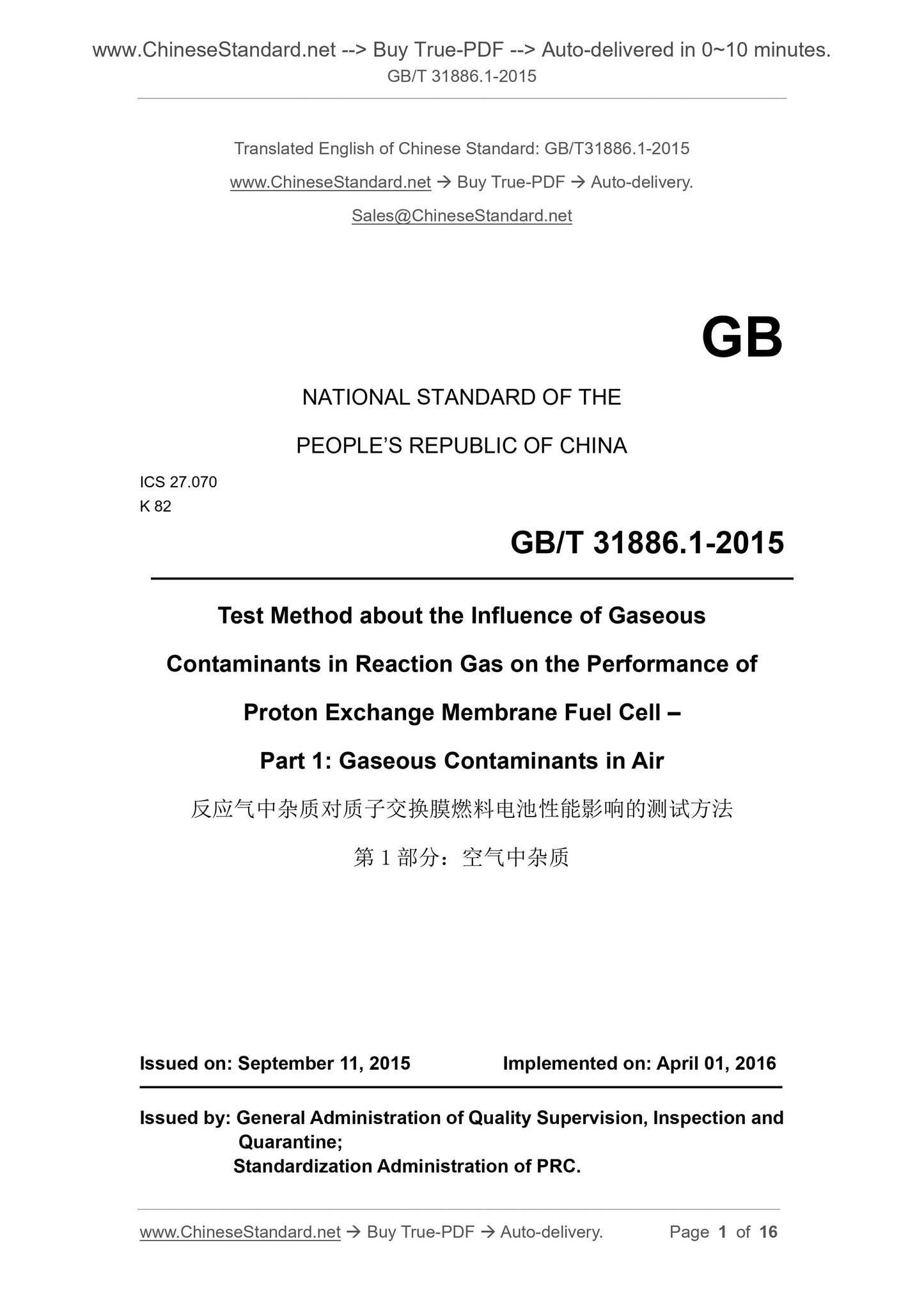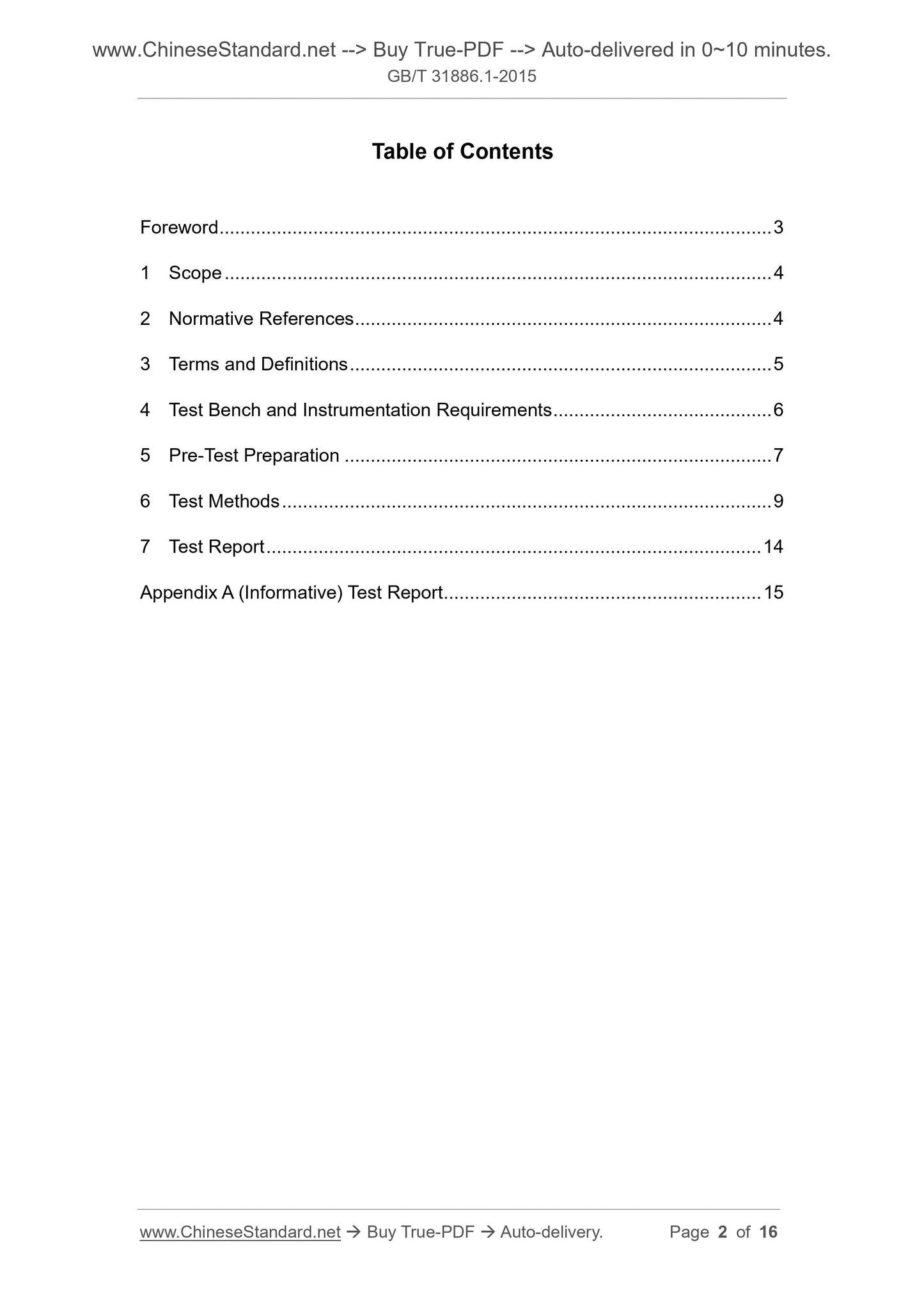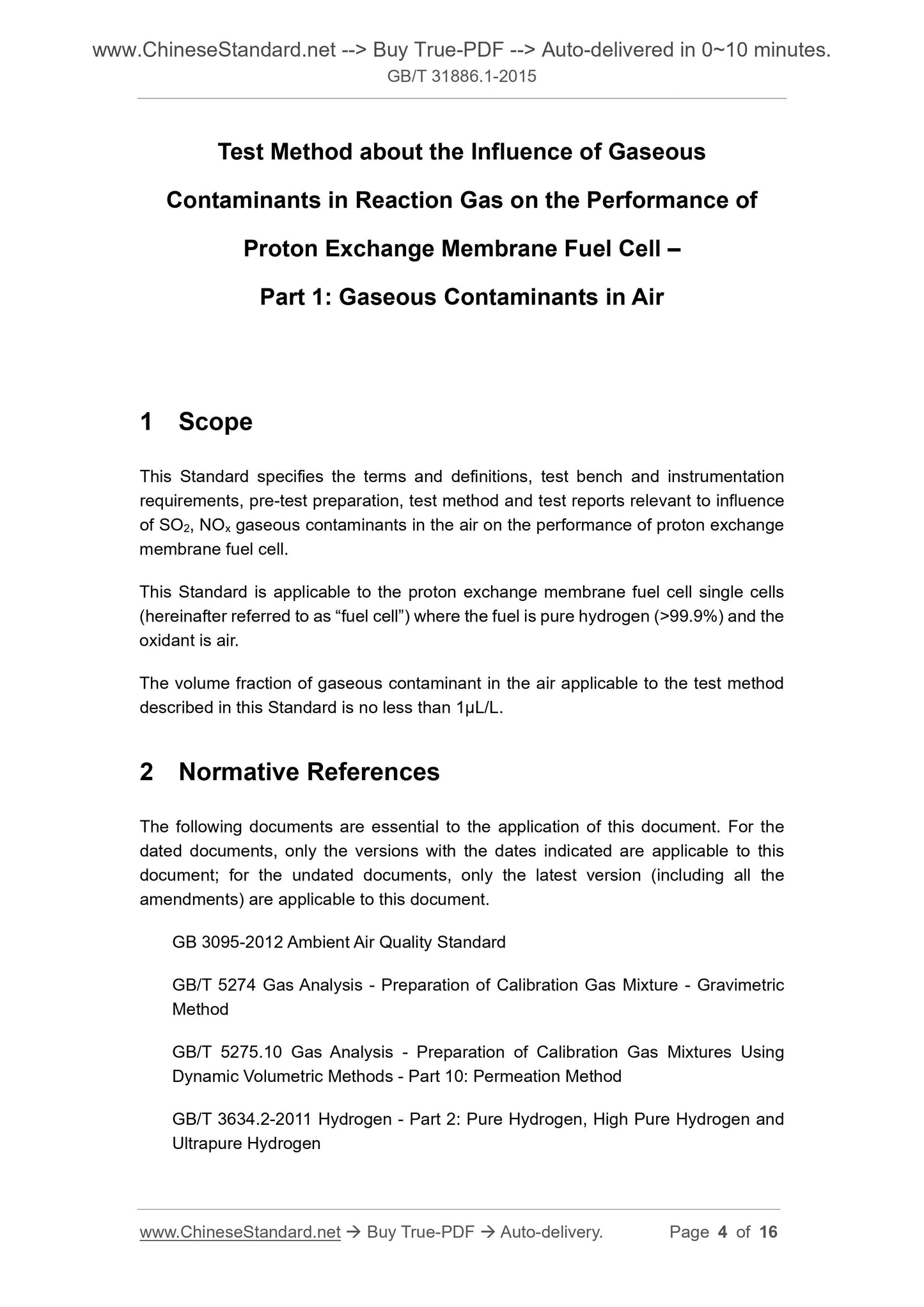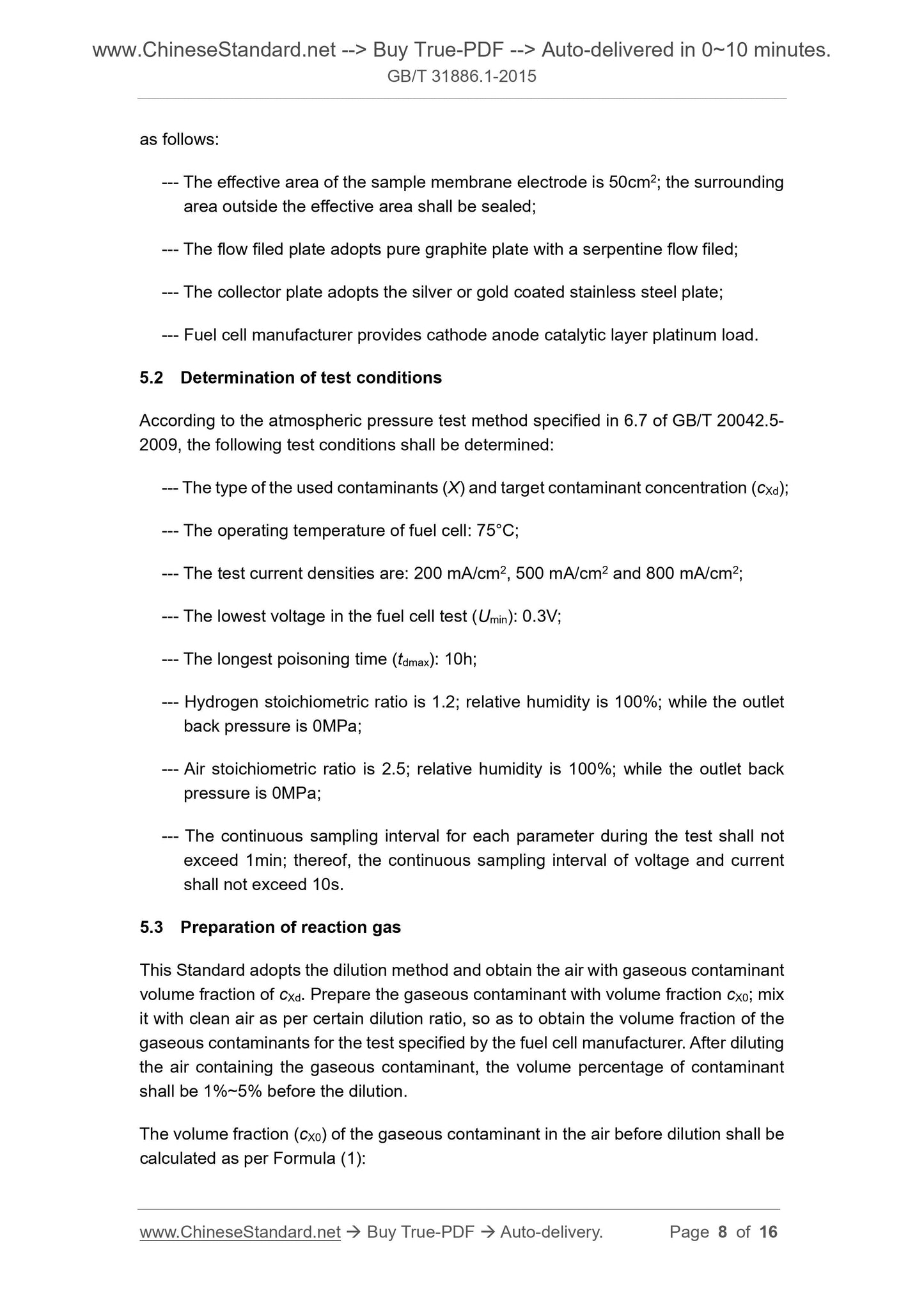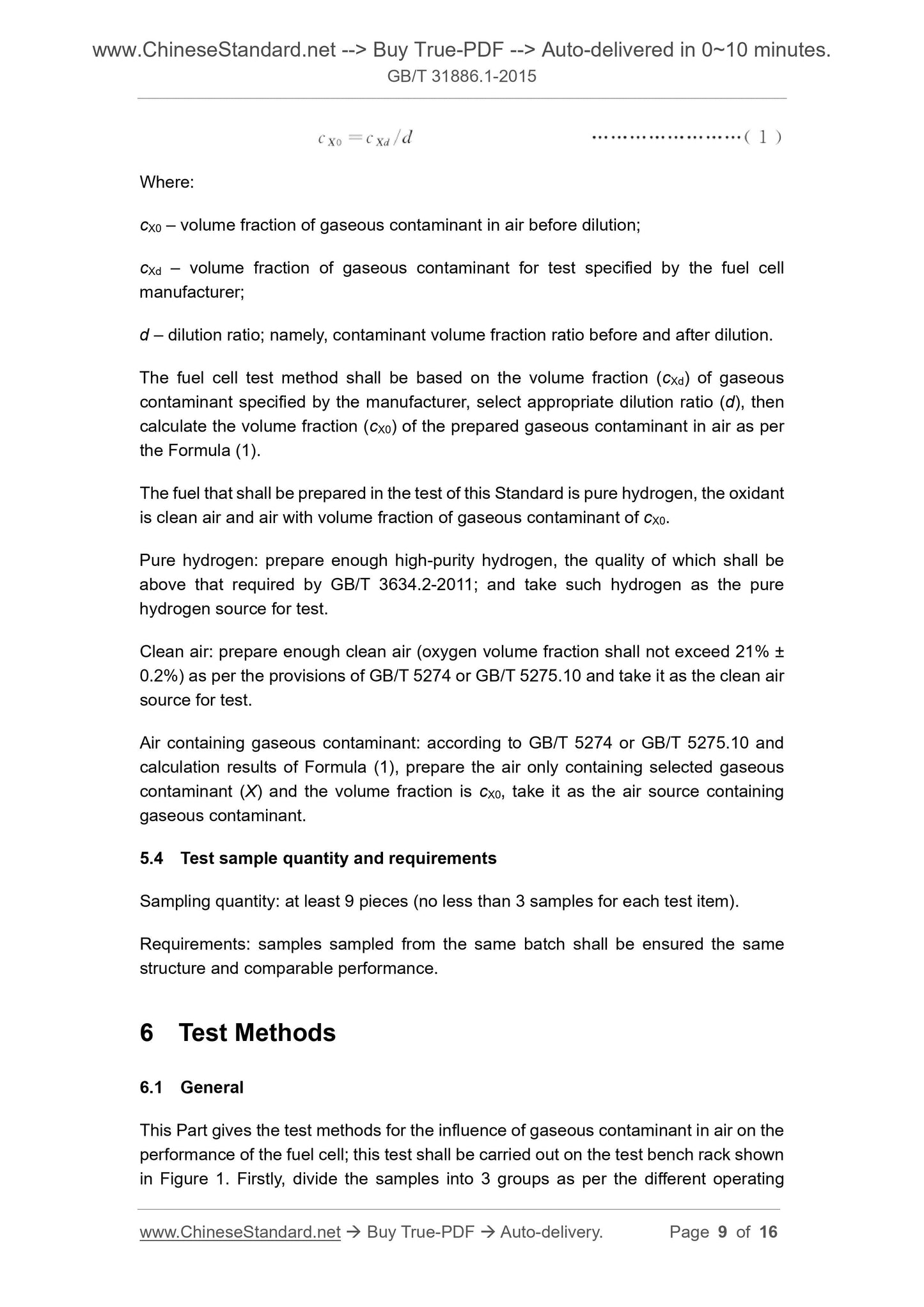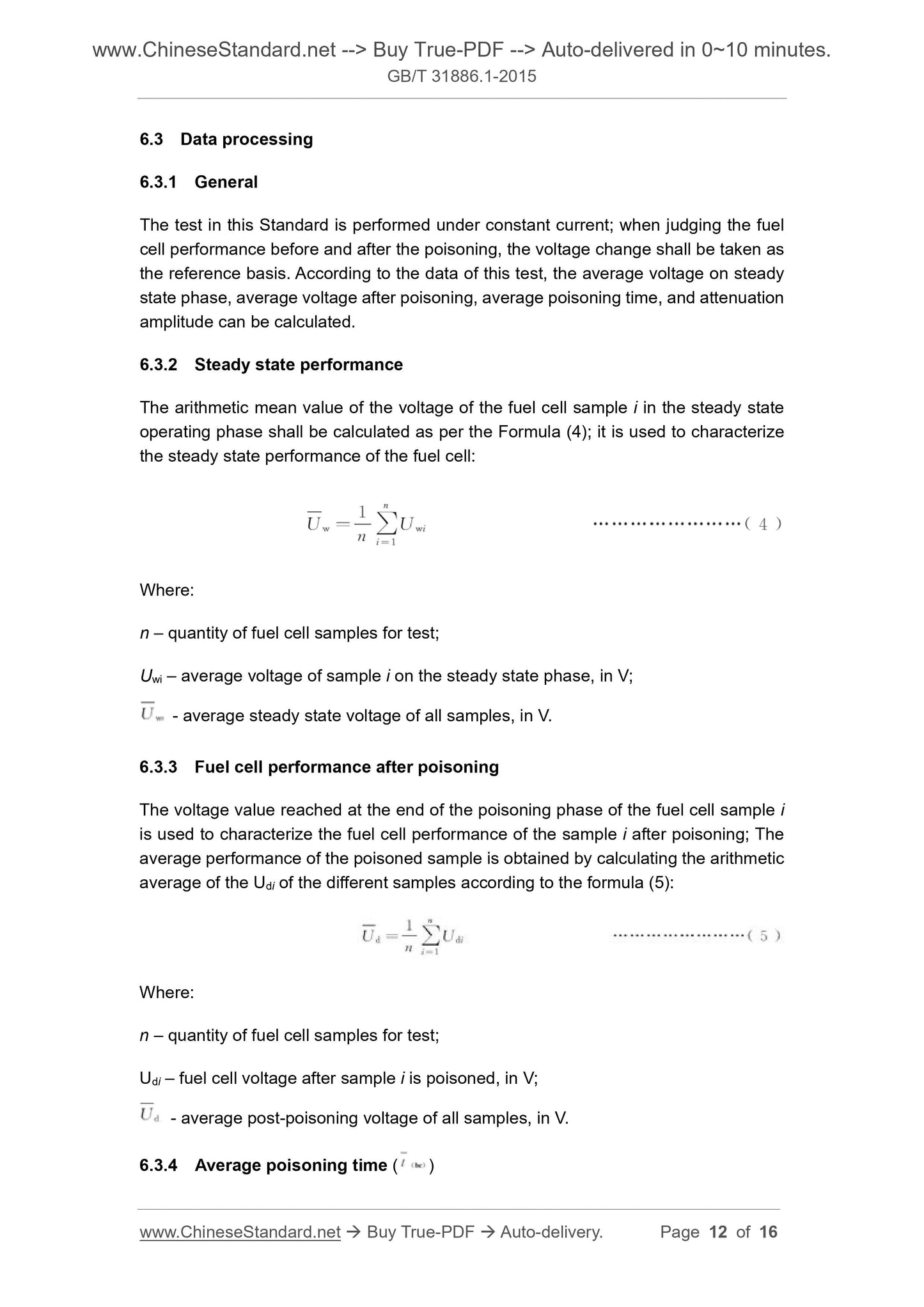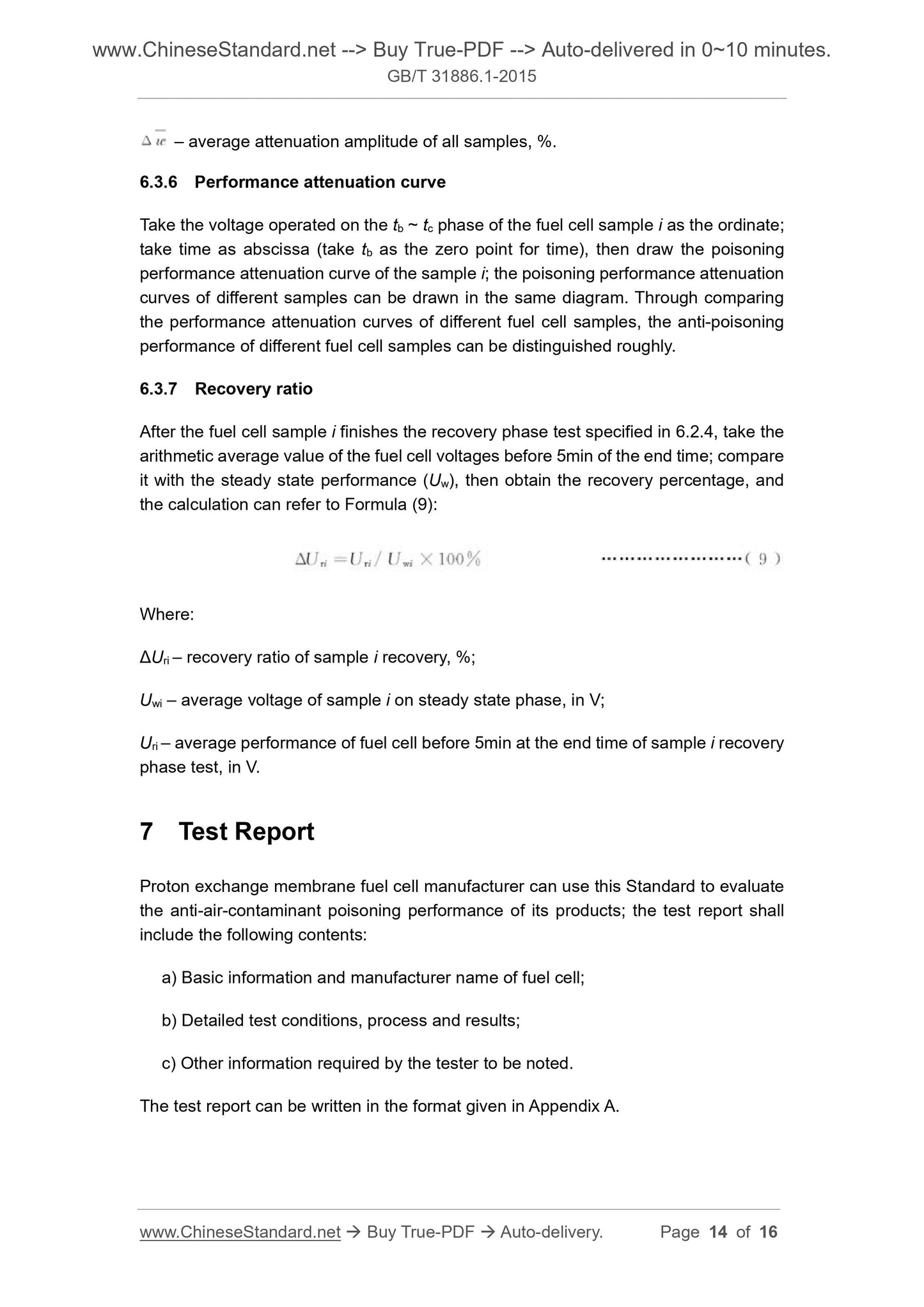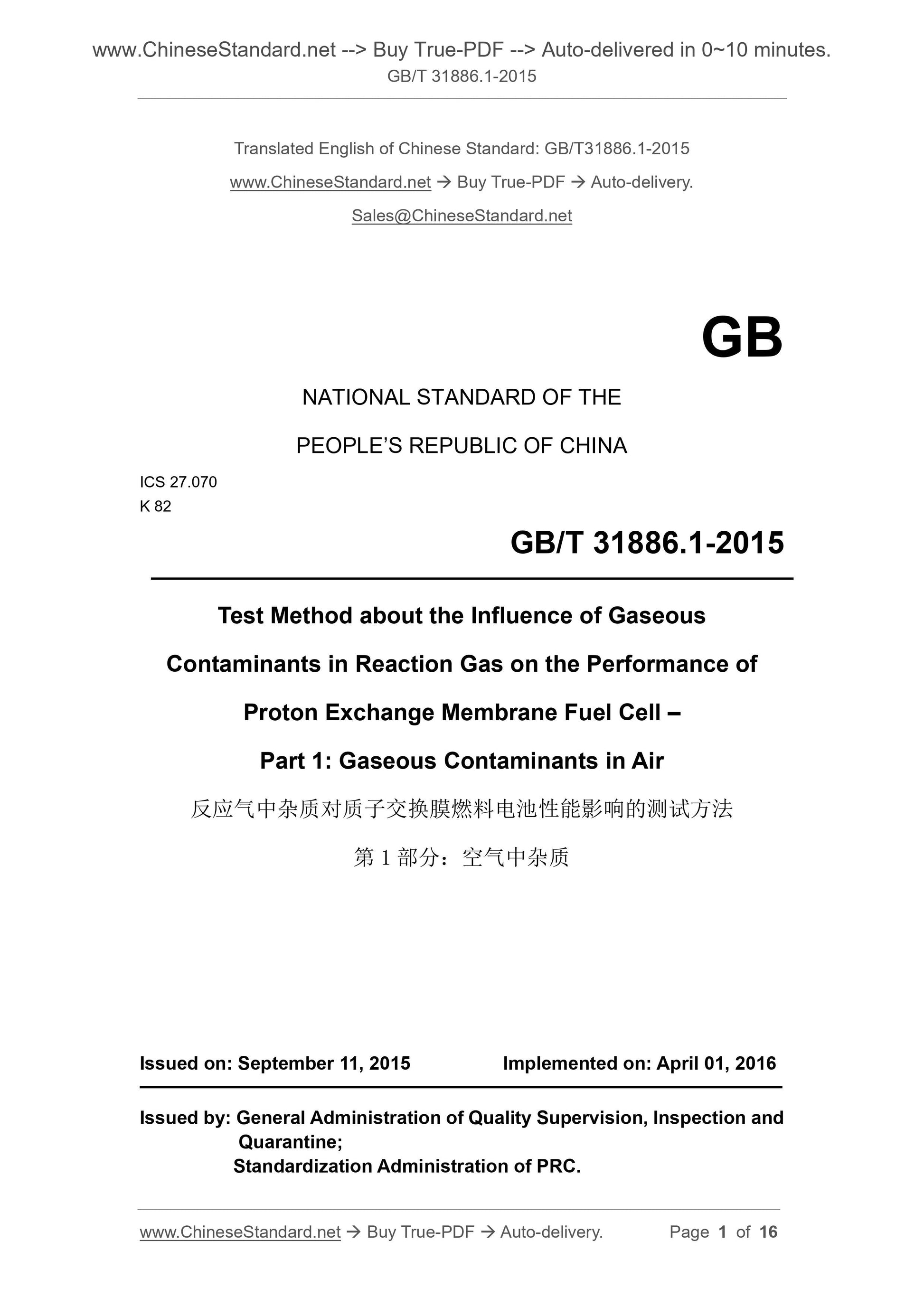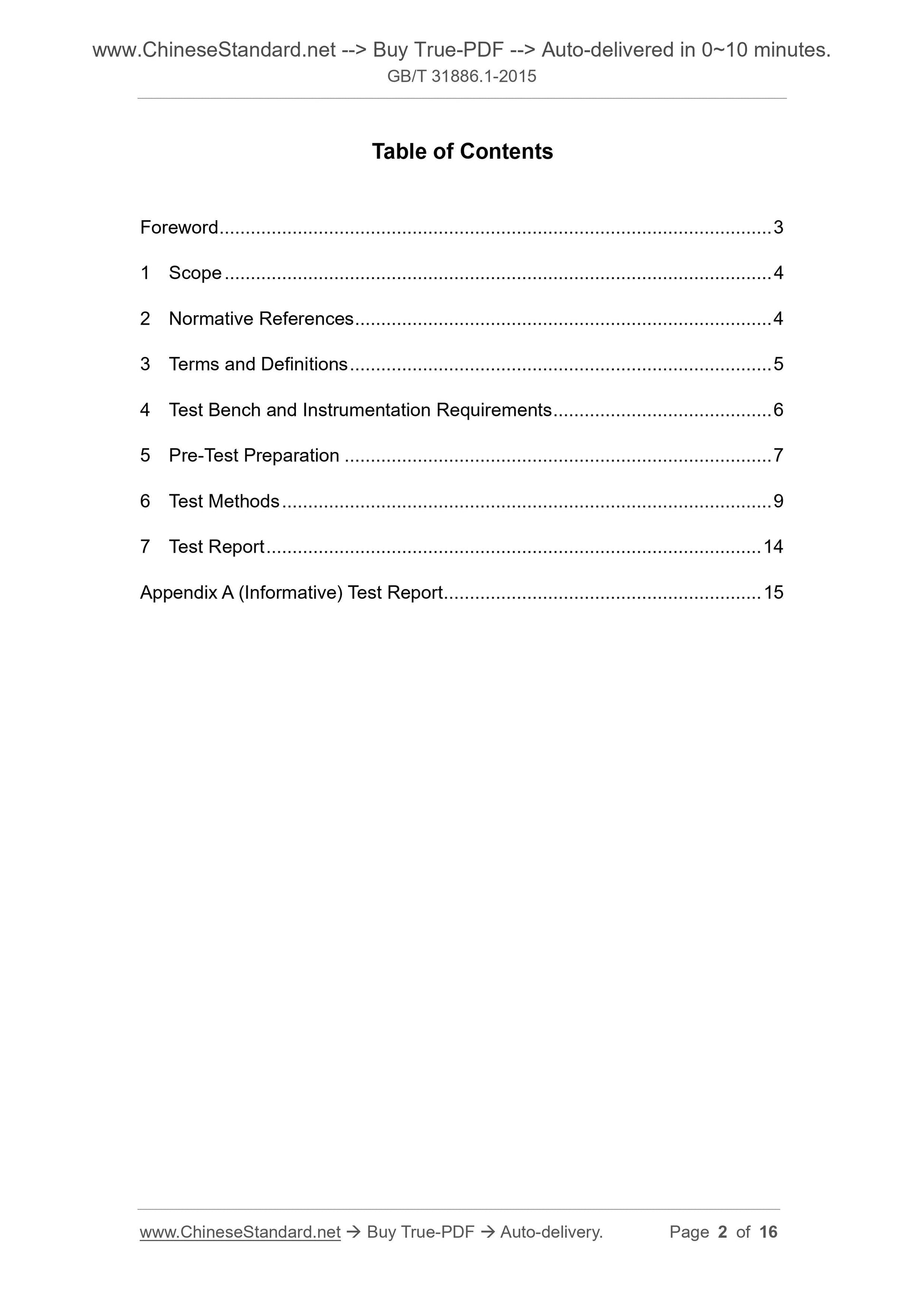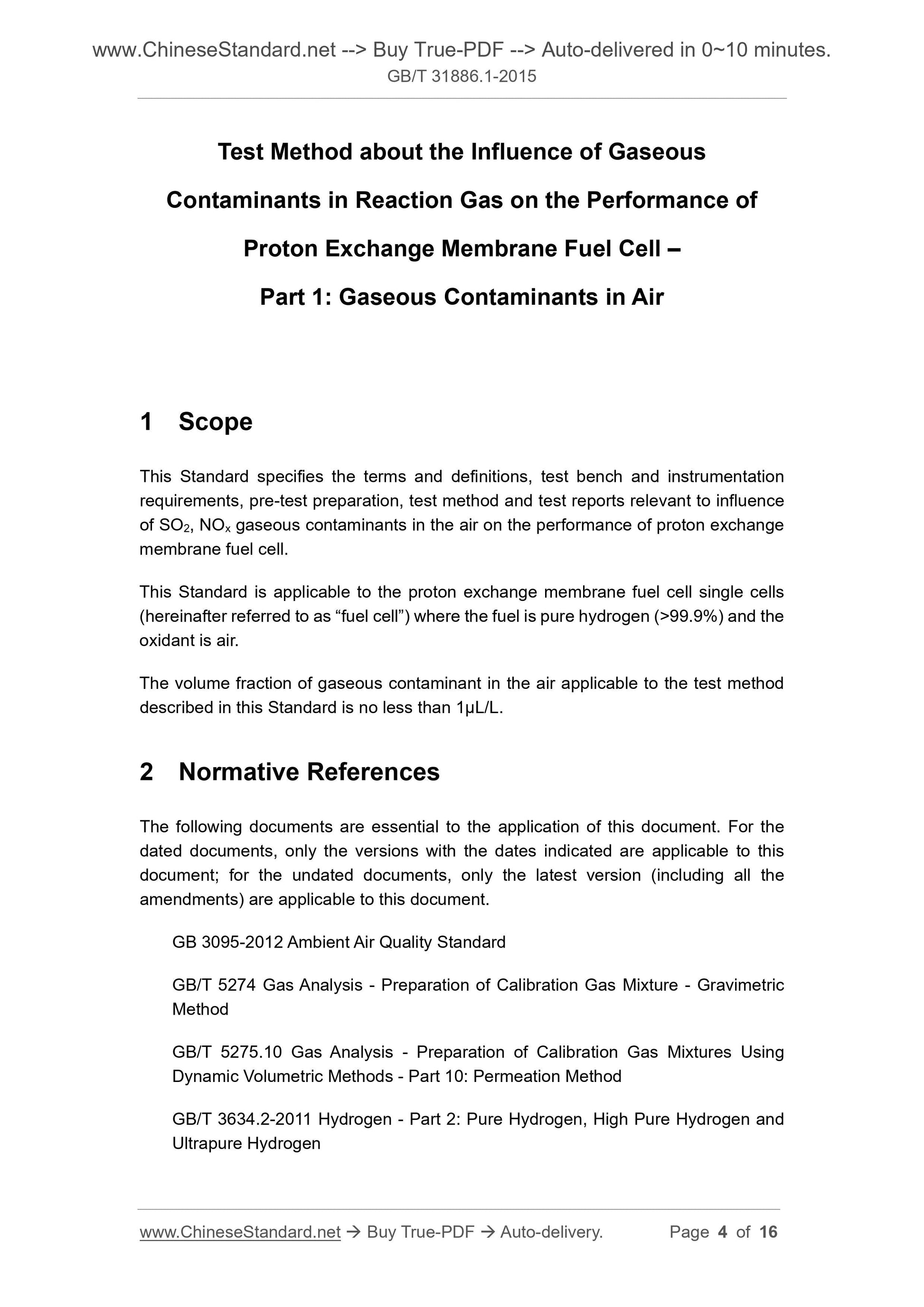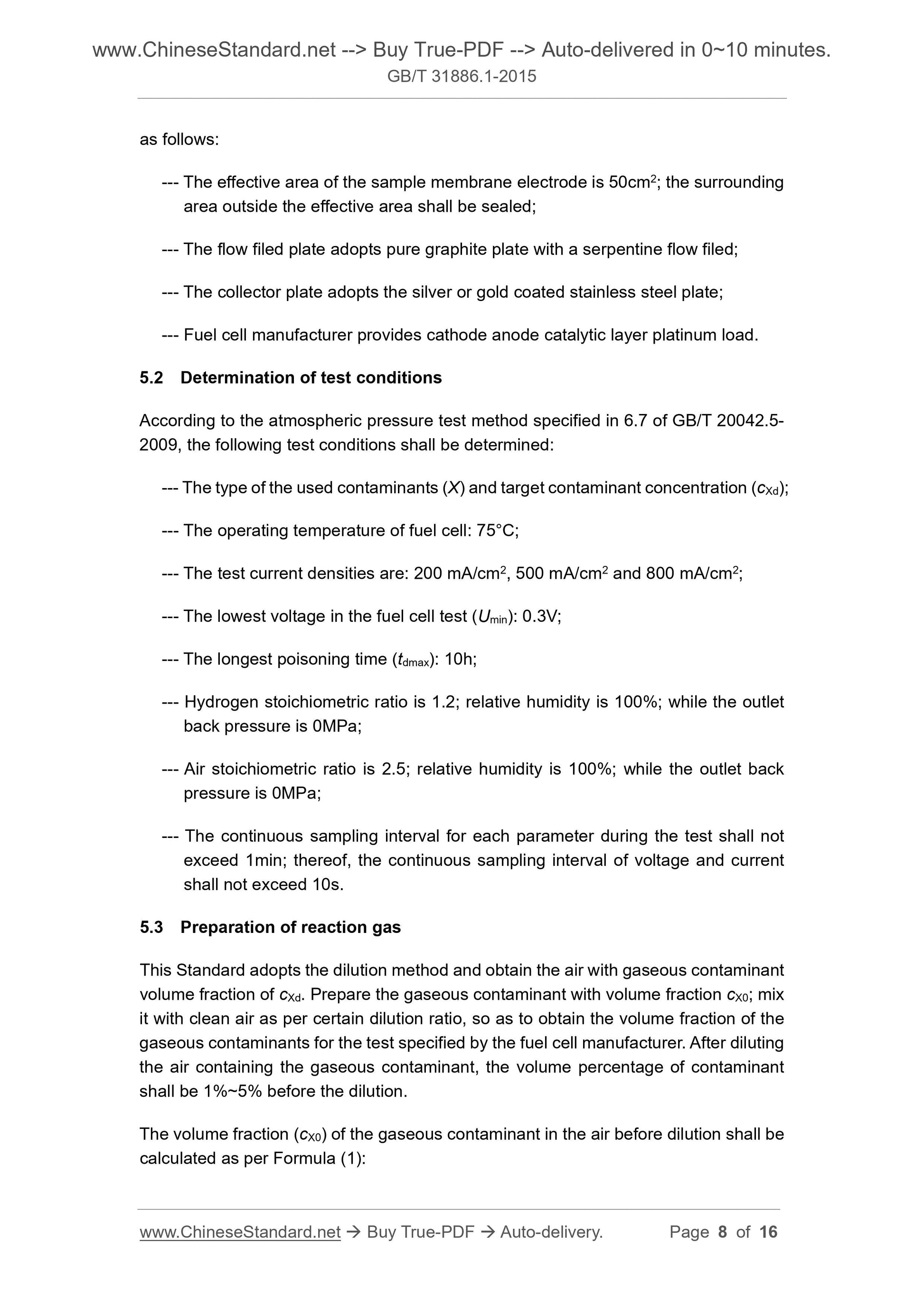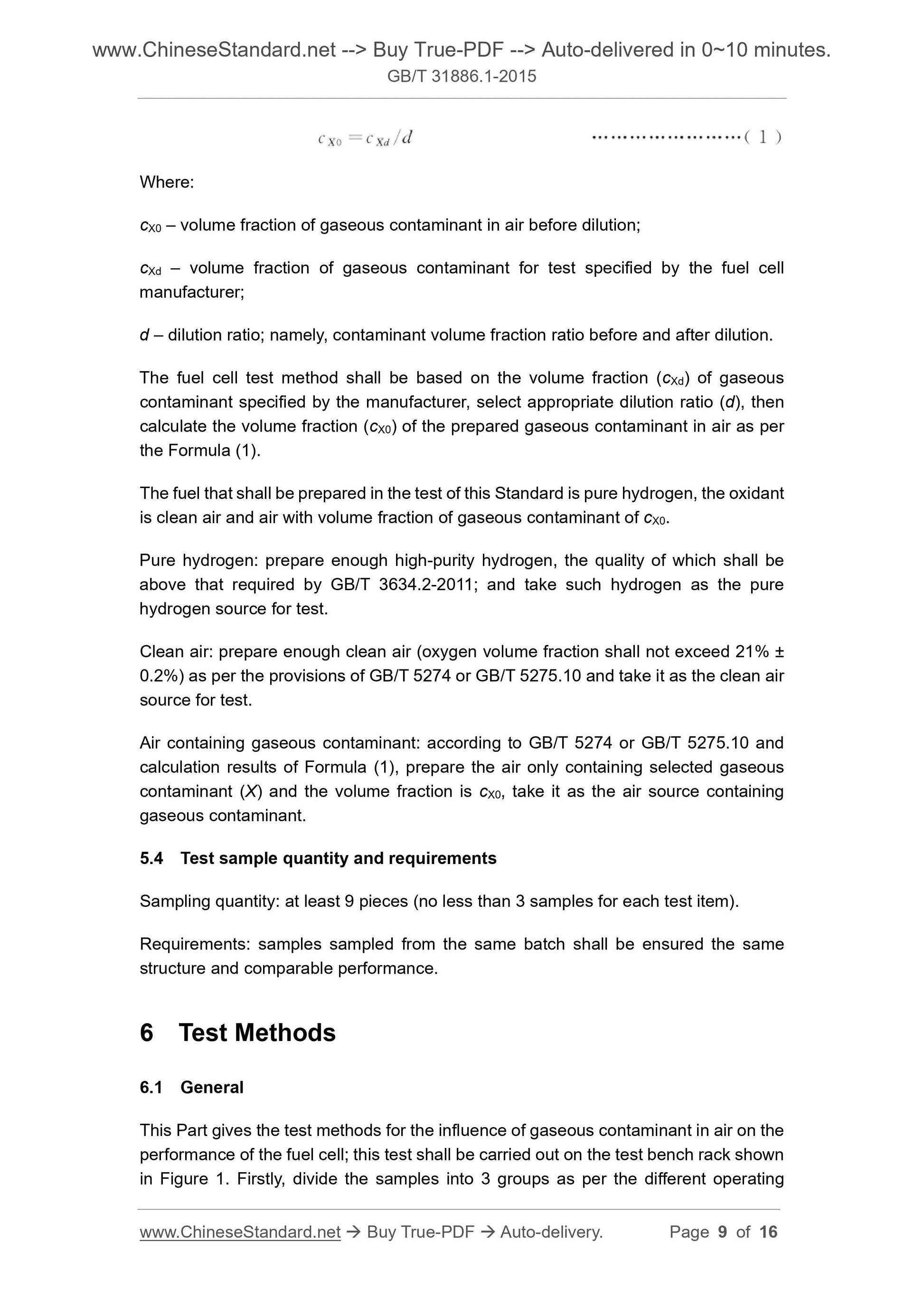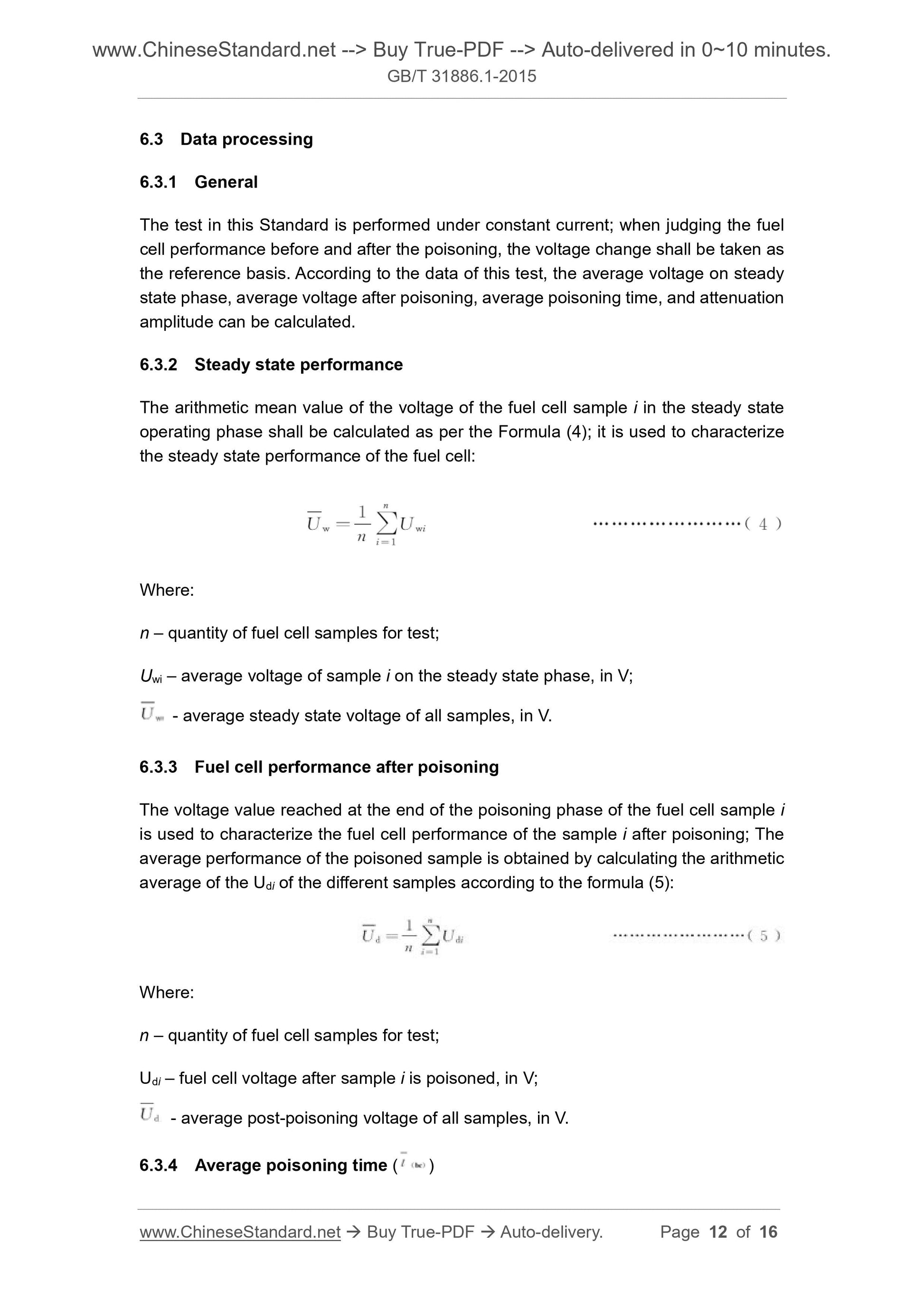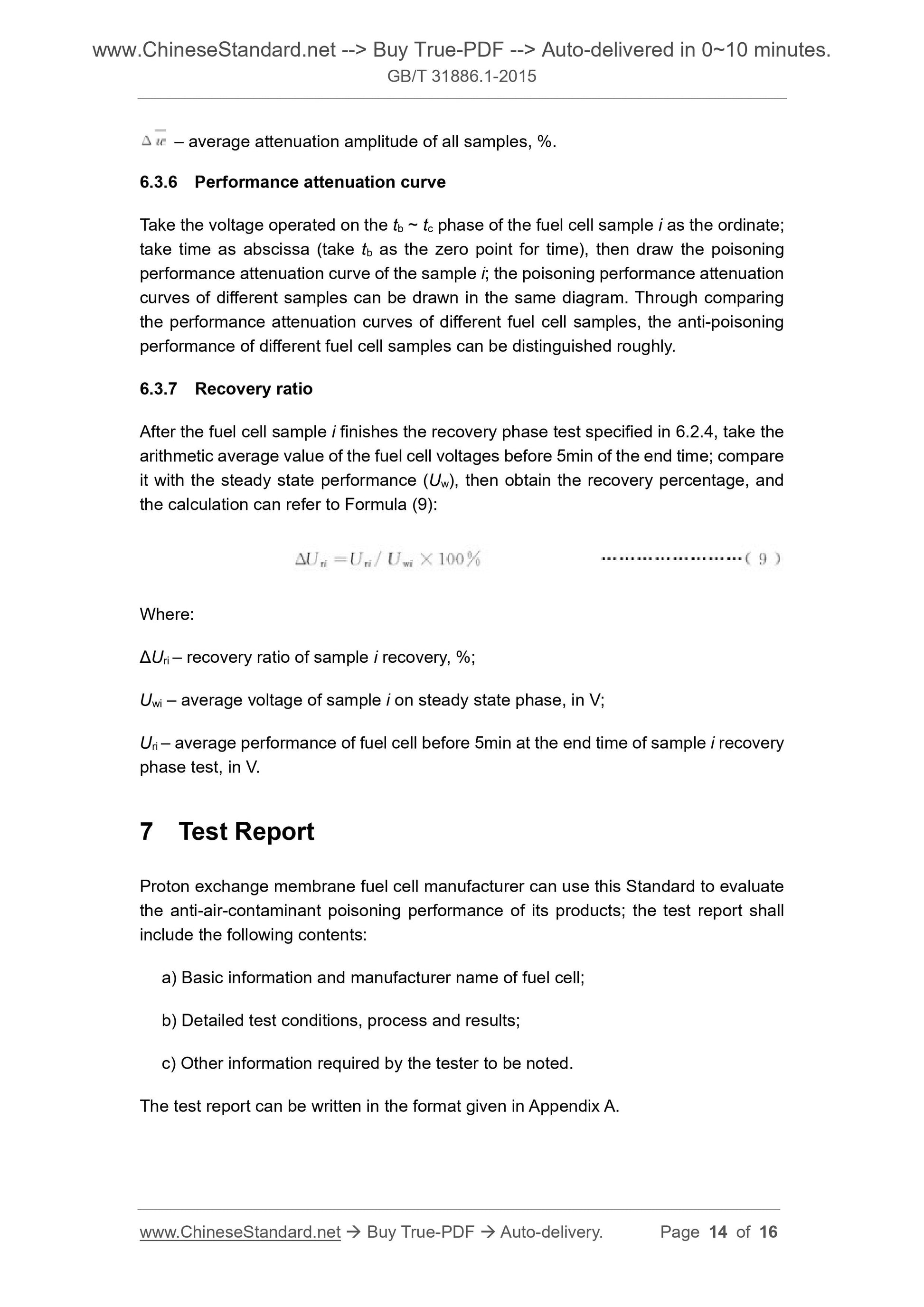1
/
of
7
www.ChineseStandard.us -- Field Test Asia Pte. Ltd.
GB/T 31886.1-2015 English PDF (GB/T31886.1-2015)
GB/T 31886.1-2015 English PDF (GB/T31886.1-2015)
Regular price
$175.00
Regular price
Sale price
$175.00
Unit price
/
per
Shipping calculated at checkout.
Couldn't load pickup availability
GB/T 31886.1-2015: Test Method about the Influence of Gaseous Contaminants in Reaction Gas on the Performance of Proton Exchange Membrane Fuel Cell - Part 1: Gaseous Contaminants in Air
Delivery: 9 seconds. Download (and Email) true-PDF + Invoice.Get Quotation: Click GB/T 31886.1-2015 (Self-service in 1-minute)
Newer / historical versions: GB/T 31886.1-2015
Preview True-PDF
Scope
This Standard specifies the terms and definitions, test bench and instrumentationrequirements, pre-test preparation, test method and test reports relevant to influence
of SO2, NOx gaseous contaminants in the air on the performance of proton exchange
membrane fuel cell.
This Standard is applicable to the proton exchange membrane fuel cell single cells
(hereinafter referred to as “fuel cell”) where the fuel is pure hydrogen ( >99.9%) and the
oxidant is air.
The volume fraction of gaseous contaminant in the air applicable to the test method
described in this Standard is no less than 1µL/L.
Basic Data
| Standard ID | GB/T 31886.1-2015 (GB/T31886.1-2015) |
| Description (Translated English) | Test Method about the Influence of Gaseous Contaminants in Reaction Gas on the Performance of Proton Exchange Membrane Fuel Cell - Part 1: Gaseous Contaminants in Air |
| Sector / Industry | National Standard (Recommended) |
| Classification of Chinese Standard | K82 |
| Classification of International Standard | 27.070 |
| Word Count Estimation | 11,160 |
| Date of Issue | 2015-09-11 |
| Date of Implementation | 2016-04-01 |
| Quoted Standard | GB 3095-2012; GB/T 5274; GB/T 5275.10; GB/T 3634.2-2011; GB/T 20042.1-2005; GB/T 20042.5; GB/T 2816-2012 |
| Regulation (derived from) | National Standard Announcement 2015 No.25 |
| Issuing agency(ies) | General Administration of Quality Supervision, Inspection and Quarantine of the People's Republic of China, Standardization Administration of the People's Republic of China |
| Summary | This Standard specifies the air of SO2, NOx gas impurity related terms and proton exchange membrane fuel cell performance definitions of impact, test platform and instrumentation requirements, prepare, test methods and test reports before testing. This Standard applies to the fuel is pure hydrogen (> 99.9%), the oxidant is air proton exchange membrane fuel cell (hereinafter referred to as "fuel cell"). Air application of this standard test method in the volume fraction of the impurity gas is not less than 1��L/L. |
Share
